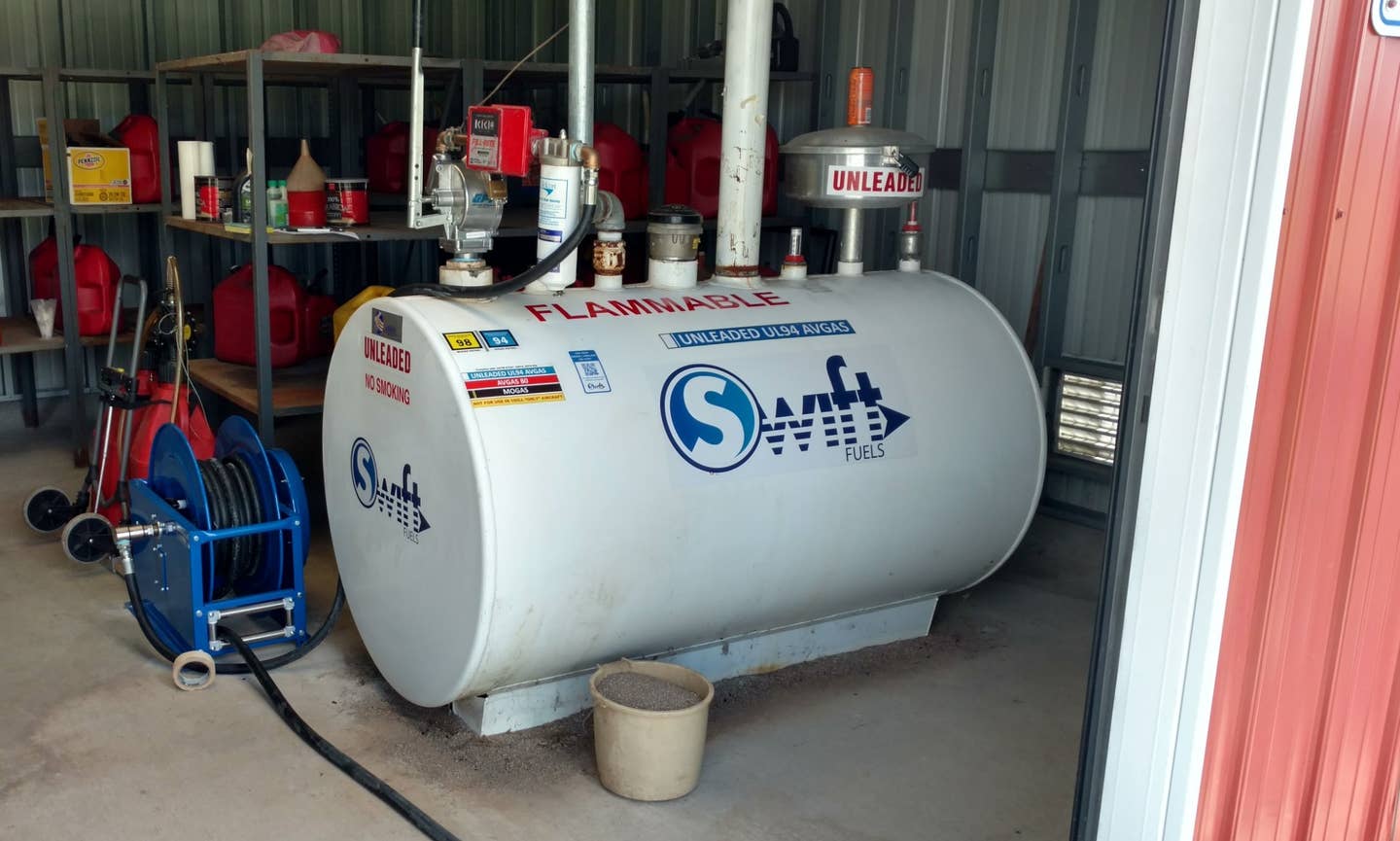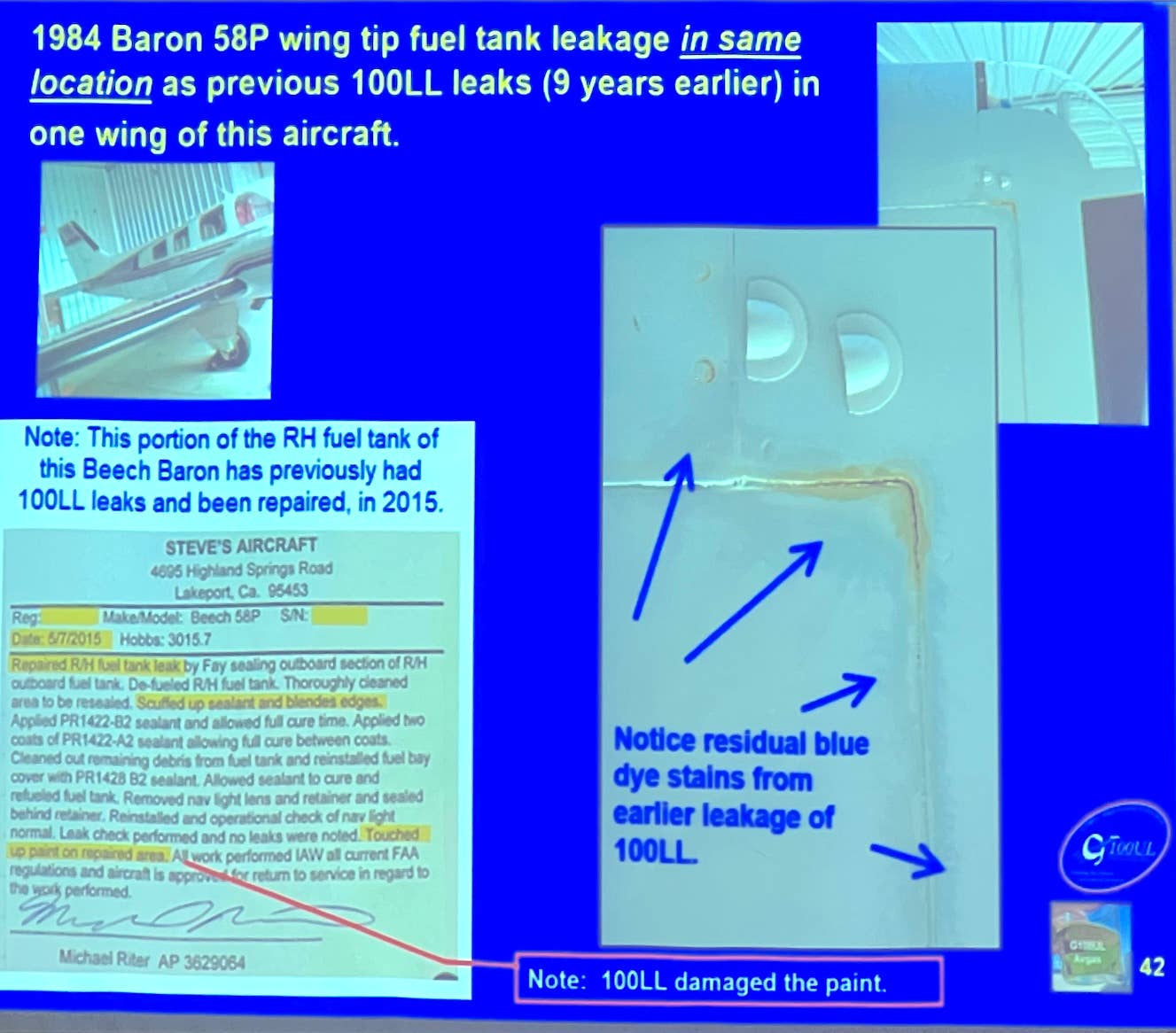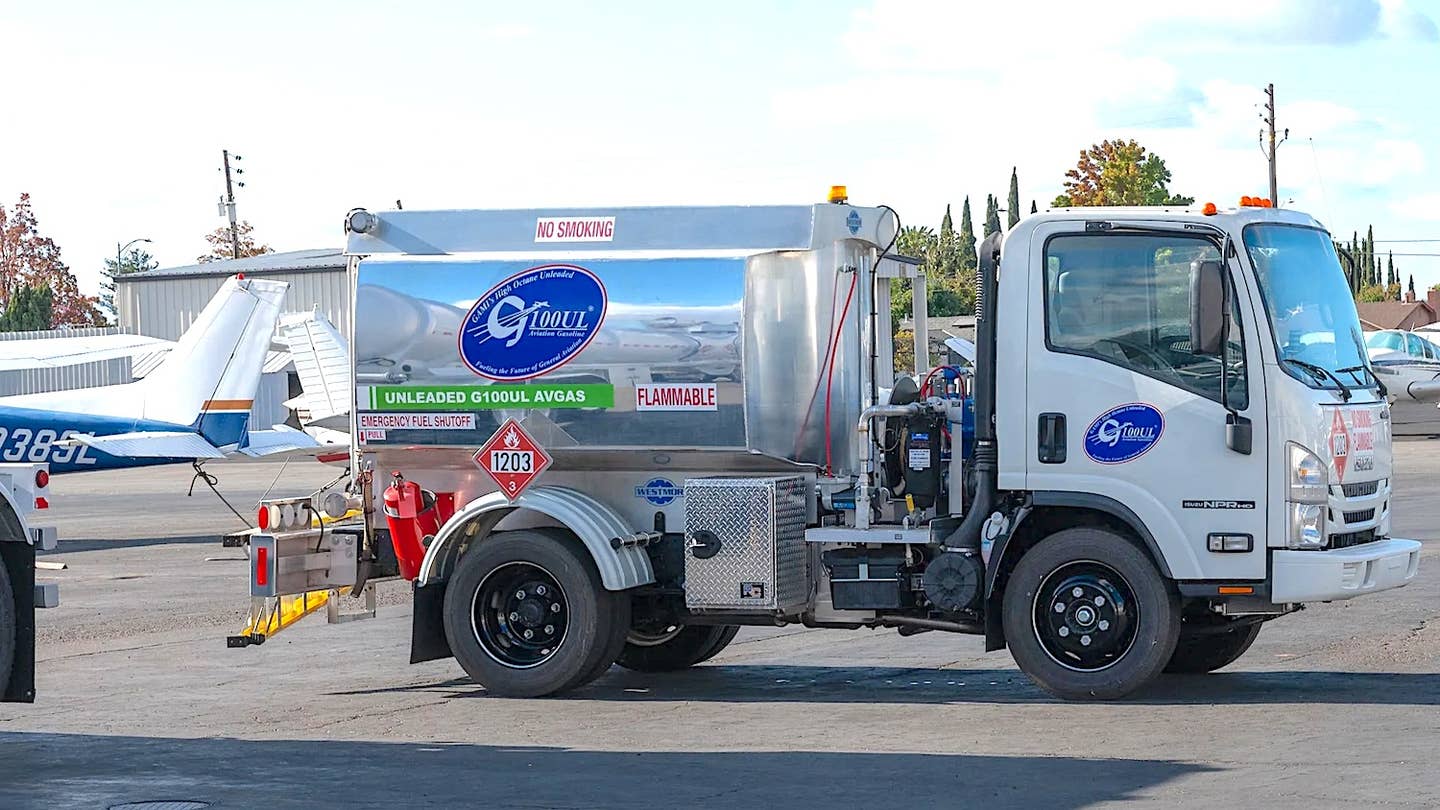Mag Timing is Easy as One, Two, Three
There are several easy ways to time a magneto, as well as specific how-to data. The staff of Light Plane Maintenance describes a common and accurate way.
This article originally appeared in the November 2001 issue of Light Plane Maintenance, and is reprinted here by permission.
First, we want you to understand that timing magnetos doesn't fall under the heading of "preventive maintenance." For certificated aircraft, this is A&P country -- especially if the magnetos are to be removed from the engine.However, nothing prevents you from checking timing as long as you are simply performing an inspection, and make no adjustments or disconnect anything without being under the watchful eye of your trusty A&P.Simple timing changes are neither complex nor difficult, and knowing that the spark plugs are firing the fuel-air mixture at the proper time goes a long way toward getting the most from the avgas you buy, as well as helping to prevent detonation and ensuring a long TBO run.It should be noted, though, that improper application of these timing procedures could cause severe engine damage in the form of detonation, rough running, loss in power, and complete failure. When in doubt, seek the counsel of a certificated mechanic.
Dual Ignition
 | |
| A simple timing check can be done by anyone as long as no adjustments are made or wires removed. The equipment is quite low in cost to acquire. | |
Aircraft engines are equipped with dual ignition systems for several reasons. The safety found in redundancy is the obvious choice but high cylinder pressures, fixed timing, combustion chamber size, design, and the goal of optimum combustion, require the ignition of the fuel-air mixture to occur via two plugs in one combustion chamber.This is so that the entire mixture can be burned before the pressure inside the cylinder reaches the critical pressure of the fuel-air mix. Since typical aircraft timing doesn't have adjustable timing according to conditions like their automotive cousins, dual ignition provides the required capability for an adequate ignition source.If the mixture is ignited at only one place, the flame-front will move progressively across the combustion chamber, heating and compressing the remaining fuel-air charge until it reaches its critical pressure and temperature. If you combine this function with a magneto that is mis-timed or cross firing, the charge can explode rather than continue a proper burn rate.This explosion, known as detonation, can be so severe that pistons can literally melt away and cylinder heads can be blown completely free of the barrel. It's for this reason that magneto-to-engine timing must be maintained within a very narrow tolerance and that both mags are operating at their peak.
Timing Marks
 | |
| Typical timing marks on a Lycoming engine are located on the forward face of the ring gear. Note reference hole drilled in the starter housing (arrow). | |
Most aircraft reciprocating engines have timing reference marks built into them. The actual number of degrees may be found on the engine data plate mounted on the engine case. In most cases the number is in the neighborhood of 25 degrees before top dead center, and both magnetos have the same timing with few exceptions such as the TCM C-85.On direct drive engines (no propeller reduction gear), the timing mark will be on the edge of the propeller-mounting flange on the crank. The TC (top center) mark on the flange will align with the top crankcase split line on most Lycoming engines.On Continental engines, the TC mark on the propeller flange will align with the lower crankcase split line. These marks, when properly positioned, indicate that the number-one piston in the number-one cylinder is at top dead center. Other marks on the flange indicate degrees before or after top dead center.Some engines have the timing marks on the alternator pulley that correspond to marks on the accessory housing. Other engines have the timing marks on the crankshaft or some crankshaft drive gear and can be viewed by removing a plug from the crankcase.The engine manufacturer's instructions will always give the location of the built-in timing reference marks.When using built-in timing marks, be sure to sight straight across the stationary pointer or mark on the nose section, the propeller shaft, crankshaft flange, or ring gear (whichever is appropriate). Sighting at an angle will result in a parallax error in positioning the crankshaft and the number-one piston.
 | |
| Timing adaptors for P-leads for Bendix S-20 magnetos can be fabricated from old parts or purchased outright. Note two different sizes of end connectors for different mag types. | |
This has been enough of a problem for some engines that Teledyne Continental Motors (TCM) has issued Mandatory Service Bulletin MSB94-8A, which provides a procedure for timing magnetos to all TCM engines.It has a wealth of information, including timing data and which O-200 engines are eligible for increased timing. A copy of this Service Bulletin may be obtained from your local aircraft parts dealer or from TCM.By far the easiest way to get the bulletins is to use the Internet. Register on the TCM Web site (you will need a valid engine serial number). You will then have access to all Service Bulletins and much more for free.Limited service literature is available for free at the Lycoming Web site, but the Lycoming site still falls short of the data available for free from Continental for their engines.Of course, Lycoming service literature is probably four times the volume of Continental and is available, including CD format, but for a fee. Further, both sites are in a constant state of change, as is so much of the Internet, so expect to see changes when you visit.
 | |
| Arrow points to the timing plug, which is screwed into the number-one cylinder. It's used to locate the piston accurately with relation to its position in the cylincer. Be gentle moving the prop. | |
The Continental bulletin describes, in detail, the use of a timing disc attached to the propeller and a piston-locating plug inserted in the top plug hole of the number-one cylinder. This procedure is probably the most frequently employed in the timing of all piston engines and is preferred over the engine sighting mark method as potentially more accurate. Limited instructions also come with any timing disk apparatus you may buy.Another accurate method of determining piston position precisely is called the Time-Rite system, which uses a precision sensor screwed into the cylinder under test. It's made by ATS, (800) 248-0638, and a complete setup will run close to $300. One reason why the much cheaper timing disk procedure is so popular.The famous or infamous, as the case may be, Bendix dual mag (two magnetos in one case) is timed to the engine in a conceptually similar way as the following information, but has different technical checks to assure proper timing to the engine. See the appropriate Bendix manual for the specifics on this unique magneto.
Top Dead Center
Any given piston position is referenced to top dead center (TDC). This piston position is not to be confused with a rather hazily defined position called top center (TC). A piston in top center has little value from a timing standpoint because the crankshaft position may vary from one to five degrees in this piston position.In other words, the piston is at the top of its travel and is in its "no-travel" zone. This occurs between the time the crankshaft and connecting rod stop pushing the piston upward and continues until the crankshaft has swung the lower end of the connecting rod into a position where the piston is now pulled downward.Top dead center, on the other hand, is the point at which the piston is positioned the maximum distance from the center of the crankshaft journal. It is also in the center of the "no travel zone." This places the piston in a position at which a straight line can be drawn through the center of the crankshaft journal, the crankpin, and the piston pin.This is the point from which all other piston and crankshaft positions are referenced. Placing the piston in this position by turning the crankshaft can be accomplished in any one of several ways.
 | |
| The classic "flower pot" is attached to the spinner with two rubber bands. Be sure the pointer is lubed and does not bind up so it can eaisly move. It looks "Rube Goldberg," but it works. | |
There are several "top dead center" indicators in use today; however, the most common and least expensive of the group uses a locator plug and timing protractor. The "flower pot," as it is called, is available from ATS under their P/N E25, and sells in the neighborhood of $58.To use it properly, simply bring the number-one cylinder up on the compression stroke by putting a finger over the spark plug hole to feel for air pressure. Then screw the top dead center locator-pin into the top spark plug hole and bring the piston slowly up the barrel until it hits the locator pin.Attach the "flower pot" to the front of the spinner by wrapping the elastic bands around two propeller blades and back to the "flower pot." Set the disk so that the hanging needle (be sure the needle attach point is lubricated and the needle doesn't stick) points to zero or TC (top center). Then turn the propeller backward until the piston again hits the locator plug.Go slowly with this procedure. You don't want to damage the piston, locator plug, or connecting rod. Record the number of degrees the propeller has turned in this procedure and divide that result by two.Remove the locator plug and turn the prop in the normal direction of rotation until you reach the exact number of degrees travel previously calculated. This will be BDC (bottom dead center) for the number one-piston on the compression stroke.Next, reset the timing disc to BC and then rotate the propeller in the normal direction of rotation until you reach TC. The piston will now be at top dead center on the compression stroke.Now, back the propeller up approximately five degrees more than what the engine data plate calls for in engine timing. Slowly bump the prop in the normal direction of rotation until the correct timing position is reached. (It's important to move the prop up to the correct timing mark in order to eliminate any gear train backlash and slop.)Now that you have properly positioned the engine to fire the number-one cylinder at the correct time before top center (BTC), you'll need to attach a timing light to the magnetos in order to verify that the points are just beginning to open.If your magnetos are equipped with impulse couplings, be sure to "unload" the impulse by turning the prop past TDC and listen for the snap (clank may be more descriptive) before setting your engine to the proper firing position. Failure to do this will make it impossible to set the timing correctly.
Lights and Timing
There are two general types of timing lights in common use today. Both have two lights and three external wire connections. Each has different internal characteristics but they function in much the same way.One timing light illuminates and buzzes when the points are open. This of course is called the "buzz box" and is probably the best-known and most widely used magneto timing light on the market today.It can be purchased from ATS (Aircraft Tool Supply) under their P/N E50 or from US Tool, P/N TP105E for $88-90. US Tool also has a house brand buzz box we have not tried that is available for $60, and it has a P/N of TP105.The other timer type has lights that extinguish when the points are closed. It also makes a two-tone sound that is much easier on the ear than that of the "buzz box." This timing light is available from ATS under a P/N LED52 or from US Tool, P/N TP300B for under $50. Regardless of the timing light used, make sure you know what happens to the lights when the points open.To connect the timing light to the magneto, clip the lead marked "left" to the primary or P-lead on the left magneto. The lead marked "right" goes to the P-lead on the right magneto. The ground lead (or black lead) must be connected to a good ground.On timing leads that are not marked "left" or "right," you will notice that one lead is green and the other is red. Like the navigation lights on your aircraft, red is left and green is right. I know that this all sounds painfully obvious but to do it wrong can cause you some real frustration.With most Slick and Bendix magnetos the P-leads do not have to be disconnected from the magneto but the magneto switch must be in the "both" position. With some S-20 series Bendix magnetos, you must remove the P-lead from the magneto and place a conductor of some sort in the hole where the P-lead belongs.Most A&P mechanics have made a Bendix magneto timing lead from an old set of Bendix P-leads. If you have the need and can get your hands on a set of these little gems they will prove helpful. If you can't beg, borrow, or steal any of these leads you can get a set in kit form from Bendix.The different kit numbers are too numerous to list here but are shown in the Bendix System Support Manual and can be ordered through your local aircraft parts dealer. They are called Bendix magneto terminal kits. With this type of magneto you can leave the magneto switch in the "off" position.In the interest of safety, make sure the ignition leads are disconnected at the spark plugs. If the magneto-to-engine timing must be adjusted, you need only to loosen the two mounting nuts and nudge the magneto enough to turn the timing light off (or on, depending on the light).
If the magneto won't turn due to dried sealant or a stuck gasket, grasp the magneto by the housing and rock gently up and down. Often enough, this will free the gasket and allow the mag to be adjusted. If the mag remains stuck, try tapping gently with a soft mallet to jar the mag free.Use care with this part of the process. If the gasket is damaged or torn you will be the proud owner of a new oil leak, making a replacement gasket necessary. Once the magneto timing is set, tighten the hold down nuts using an even "step-torque" procedure.This insures that the magneto won't be pulled to one side of the pad, altering your timing adjustment. Don't remove the mounting nuts or the magneto unless you must. There are two rubber cushions that hold the magneto drive gear to the engine-driven cup.These cushions remain secure in the cup when the magneto is assembled to the engine but can fall free, lodging in the accessory housing or falling to the sump when the mag is removed.Point gap and internal timing should be checked before installation and the Bendix impulse coupling (if installed) will need to be inspected. Breaker points wear with normal use. Point material loss and cam follower deterioration will alter the magneto-to-engine timing sufficiently enough to change the internal E-gap timing.This reduces the magneto's ability to provide a hot spark and degrades overall engine performance. Simply re-timing the mag will help, but when the point set gap closes enough to affect operation, the only sure way to correct the problem is to remove the mag and reset the point gap or replace the contacts. Seek the counsel of your local mechanic if your points are reaching the nearly closed position.Remember, there is mag to engine timing, which is what we have been previously discussing, and involves the position of the mag relative to the engine. Internal magneto E-gap timing, on the other hand, involves an internal adjustment within the magneto itself, and requires adjusting the magneto internal points to open at the optimal time for maximum spark production.The E-gap (Efficiency gap) is the point at which the greatest magnetic field stress occurs. The specific number of degrees beyond the neutral magnetic position is called the E-gap angle. Opening the breaker points at this time interrupts the primary circuit current flow, and allows current to be induced in the secondary coil. This results in the maximum spark being produced at the plugs.
Gaskets and Sealant
Many mechanics use Lubriplate 105 white grease on the magneto gasket. This makes it easy to move the magneto, but once the engine has been run and warmed up, the gasket is there to stay.Some mechanics swear by Permatex Aviation Gasket Sealer, which will allow you to move the magneto before it sets up and will surely keep it from leaking. But, again, removal means replacement.Many have had good experience with putting the gasket on dry, which seems to allow movement of the magneto for timing purposes without damaging the gasket's ability to seal.If you must reuse the gasket (which we don't recommend), remove any grease or oil from the surface prior to installation. Do not attempt to reuse a cracked or broken gasket. It will leak no matter how much sealant is used.Make sure all old gasket material is removed from the magneto flange and the engine accessory case. It's essential that no gasket material be allowed to drop into the engine since it can get into the oil and wreaks havoc.Once the mag is in place and properly timed, ground run the engine and perform a magneto check. Note the response on the EGT to single mag operation -- the EGT should go up about the same amount on each mag selected and the RPM drop should be smooth and even.After the run, inspect the magneto bases for oil leaks and double check the security of mounting nuts and P-lead grounding wires (including the wire braiding).If your ground run leaves you with doubt or backfiring and loud explosions accompany it, discontinue the run and consult with your local expert. He has seen this kind of problem before and can make the necessary adjustments.It also wouldn't hurt to give the radios a quick audio check to make sure you haven't introduced any RFI while under the hood during maintenance.










